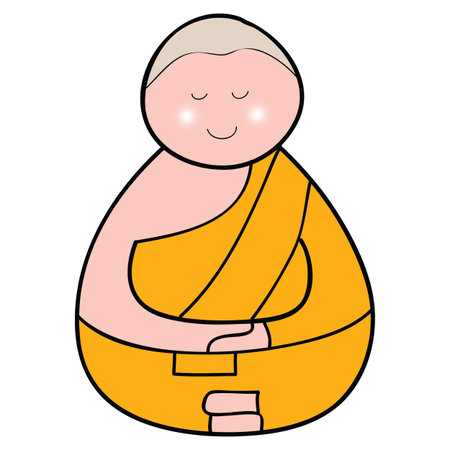Introduction to Ubtan and Its Cultural Significance
Ubtan has been an integral part of Indian skin care traditions for centuries, especially cherished for its natural and holistic approach. Rooted deeply in Ayurveda and local customs, ubtan is a blend of herbal powders, pulses, and aromatic spices, commonly prepared at home using ingredients like besan (gram flour), turmeric, sandalwood, and rose water. In Indian households, applying ubtan is more than just a beauty ritual; it is a cultural practice passed down through generations, often associated with auspicious occasions such as weddings and festivals. Historically, ubtan was used not only for cleansing and brightening the skin but also for managing unwanted facial hair in a gentle manner suited to Indian skin types. This traditional wisdom continues to be valued in modern times as families seek safe, chemical-free methods for self-care. The use of homemade ubtan is often seen during pre-wedding ceremonies like Haldi, where the bride and groom are adorned with this fragrant paste, believed to purify the skin and impart a radiant glow. Thus, ubtan’s significance extends beyond beauty, embodying the spirit of nurturing, community bonding, and respect for nature’s gifts within Indian culture.
Understanding Indian Skin Types and Facial Hair Concerns
Indian women are known for their diverse range of skin tones, from fair to deep brown, each with its own unique texture and sensitivity. Facial hair is a common concern among Indian women, often influenced by genetics, hormonal changes, and even traditional beauty standards. While facial hair is natural, it can sometimes be more prominent due to the contrast with melanin-rich skin or dense hair growth patterns. Understanding your individual skin type and the specific facial hair issues you face is essential before choosing a homemade ubtan remedy.
Common Facial Hair Issues in Indian Women
| Issue | Description | How It Affects Indian Skin |
|---|---|---|
| Thick Upper Lip Hair | Dark, coarse hair on the upper lip area | Highly visible against medium to dark skin tones; may cause self-consciousness |
| Chin & Jawline Hair | Patchy or dense growth on chin and jawline | Often linked to hormonal imbalances like PCOS; can lead to irritation after removal methods |
| Peach Fuzz (Vellus Hair) | Fine, light hair all over the face | Makes makeup application uneven; more noticeable under sunlight for fairer skin tones |
| Sensitivity After Hair Removal | Irritation, redness, or bumps post-removal | Indian skin can be sensitive to waxing/threading; risk of pigmentation and ingrown hairs increases |
Unique Features of Indian Skin Types
- Diverse Melanin Levels: Higher melanin offers some sun protection but also makes post-inflammatory hyperpigmentation more likely after harsh treatments.
- Sensitive Texture: Many Indian women have combination or oily skin that can react strongly to chemicals or abrasive methods.
- Cultural Influences: Regular use of natural ingredients and home remedies is deeply rooted in Indian culture, making gentle solutions like ubtan popular for managing facial hair.
The Need for Gentle, Natural Solutions
Because Indian skin is prone to sensitivity and pigmentation issues after conventional hair removal methods such as waxing or bleaching, there is a growing preference for natural alternatives. Ubtan—an age-old Ayurvedic remedy—has been trusted by generations for its mild exfoliating properties and ability to reduce unwanted facial hair without harming the delicate balance of Indian skin. Choosing the right ubtan formulation according to your skin type ensures effective results while maintaining healthy, glowing skin.
![]()
3. Essential Ingredients for Homemade Ubtan
When it comes to preparing ubtan at home for facial hair reduction, Indian households have trusted certain age-old ingredients that suit our skin types and traditions. Here are the most popular choices:
Besan (Gram Flour)
Besan is a staple in Indian kitchens and beauty routines. It acts as a gentle exfoliant, helping to remove dead skin cells and fine facial hair gradually. Its cleansing properties also help unclog pores, leaving your skin smoother and brighter.
Turmeric (Haldi)
Turmeric is renowned for its anti-inflammatory and antibacterial benefits. In ubtan, it works to lighten unwanted facial hair over time and evens out the skin tone. Turmeric’s natural yellow tint gives a healthy glow and helps in reducing hair growth when used regularly.
Sandalwood Powder (Chandan)
Sandalwood has been used in Indian rituals and skincare for generations. It cools the skin, soothes irritation, and contributes to slowing down facial hair regrowth. Its aromatic properties also provide a calming effect during application.
Milk
Milk is often added to ubtan mixtures for its moisturizing qualities. The lactic acid in milk gently exfoliates and softens the skin, making it easier for other ingredients to work on facial hair. It also helps bind the powders together into a smooth paste.
The Synergy of Ingredients
Together, these natural ingredients make a powerful combination tailored for Indian skin types—balancing oil production, soothing sensitivity, and targeting facial hair gently yet effectively. By using these elements in your homemade ubtan, you can embrace traditional wisdom while addressing modern skincare needs.
4. Step-by-Step Guide to Making and Applying Ubtan
Preparing Homemade Ubtan for Indian Skin
Creating ubtan at home is a cherished ritual in many Indian households, especially before festive occasions or weddings. Here’s a simple, traditional recipe that suits Indian skin tones and textures:
| Ingredient | Quantity | Purpose/Benefit |
|---|---|---|
| Besan (Gram Flour) | 2 tablespoons | Exfoliates and brightens skin |
| Haldi (Turmeric Powder) | 1/2 teaspoon | Reduces hair growth and adds glow |
| Dahi (Curd/Yogurt) | 2 teaspoons | Moisturizes and soothes skin |
| Lemon Juice (optional) | Few drops | Naturally lightens facial hair |
| Milk or Rose Water | As needed to make paste | Binds ingredients; rose water soothes sensitive skin |
Step-by-Step Preparation Instructions
- Sift the dry ingredients: In a clean bowl, add besan and turmeric. Mix thoroughly to avoid lumps.
- Add the liquids: Pour in curd and a few drops of lemon juice if desired. Gradually add milk or rose water while mixing until you get a smooth, thick paste.
- Let it rest: Allow the mixture to sit for 5-10 minutes. This helps the ingredients blend well and enhances their efficacy.
- Avoid contamination: Always use a clean spoon and bowl, as per Indian household hygiene practices.
Proper Application Technique & Local Ritual Tips
- Cleansing: Wash your face with lukewarm water to open up pores before applying ubtan.
- Application direction: Using your fingertips, apply ubtan evenly in the direction opposite to facial hair growth. This helps in loosening fine hairs from roots.
- Mild massage: Gently massage in circular motions—avoid aggressive scrubbing, especially around delicate areas like under the eyes.
- Dwell time: Let the ubtan dry partially but not completely (about 15-20 minutes), as per traditional advice from elders.
- Pehle snan, phir ubtan: Many families recommend applying ubtan before bath, followed by gentle removal during shower for best results.
- Removal: Moisten fingers with water and gently rub off the pack in an upward motion. Rinse off remaining residue with cool water.
- Punaravartan (Repeat): For visible reduction in facial hair, repeat this ritual 2-3 times a week consistently.
Sensitive Skin Note
If you have sensitive skin, do a patch test first and skip lemon juice. You can also add a pinch of sandalwood powder (chandan) for extra cooling effect, as per traditional Ayurvedic practice.
5. Dos and Don’ts: Safe Usage for Best Results
How Often Should You Use Ubtan?
For those seeking to reduce facial hair naturally with homemade ubtan, moderation is key. Start by applying your ubtan paste two to three times a week. This frequency allows your skin to gradually adapt while minimising the risk of irritation, especially for Indian skin which can be prone to sensitivity due to climate and pollution exposure.
What to Avoid When Using Ubtan
- Avoid Over-Exfoliation: Do not scrub the ubtan harshly or use it daily; this may lead to redness, dryness, or microtears in the skin.
- Skip Harsh Chemicals: Never mix chemical bleaching agents or store-bought depilatory creams with your homemade ubtan. Stick to natural ingredients like besan (gram flour), turmeric, milk, and rose water for best compatibility with Indian skin types.
- No Hot Water Rinse: Always use lukewarm or cool water to wash off ubtan. Hot water can strip away essential oils and cause further dryness or sensitivity.
Gentle Care Tips for Sensitive Skin
- If you experience tingling or mild irritation after application, rinse off immediately and apply a soothing aloe vera gel or cold curd.
- Always do a patch test before full-face application—apply a small amount of ubtan on your inner arm and wait 24 hours to rule out allergies.
- Avoid using ubtan on broken, inflamed, or sunburned skin as this can worsen discomfort.
Enhancing Results Mindfully
To get the most from your homemade ubtan, follow up with a light, non-comedogenic moisturiser—preferably one based on coconut oil or almond oil, both deeply rooted in Indian beauty traditions. Be patient; visible reduction in facial hair may take several weeks of consistent, gentle care. Remember, the journey towards softer, smoother skin is best enjoyed at a slow, nurturing pace—just like our grandmothers always advised.
6. Complementary Lifestyle Tips for Managing Facial Hair
Holistic Living for Natural Results
While homemade ubtan is a time-tested solution for reducing facial hair, embracing holistic lifestyle changes can further enhance your results. Rooted in Ayurveda, these practices support the body’s natural balance and help minimize unwanted facial hair over time.
Ayurvedic Diet Recommendations
Your diet plays a crucial role in hormonal balance and skin health. Favor sattvic foods such as fresh fruits, leafy greens, whole grains, and nuts. Limit processed foods, refined sugars, and deep-fried snacks like samosas or pakoras, which may disturb hormonal equilibrium. Consider including turmeric (haldi), flax seeds (alsi), and spearmint tea—ingredients known in Indian kitchens—for their potential to regulate hormones naturally.
Managing Stress with Traditional Practices
Chronic stress can contribute to hormonal imbalances that trigger excess facial hair growth. Incorporate stress-reducing rituals rooted in Indian culture such as daily yoga (especially pranayama and surya namaskar), meditation, or chanting mantras like “Om Shanti.” Even spending a few moments in silence or practicing mindful breathing before your morning chai can make a significant difference.
Regulating Sleep Patterns
Aim to sleep and wake up at consistent times, aligning with the Ayurvedic concept of dinacharya (daily routine). Quality sleep helps regulate hormones and supports overall well-being—both vital for managing facial hair growth.
Hydration and Herbal Support
Drink plenty of water throughout the day to flush out toxins. Consider sipping warm herbal teas such as tulsi or neem, both revered in Indian households for purifying the body and supporting skin health.
By integrating these complementary lifestyle habits alongside your homemade ubtan routine, you honor both ancient wisdom and modern wellness, creating a gentle yet effective path towards naturally reduced facial hair suited for Indian skin.

